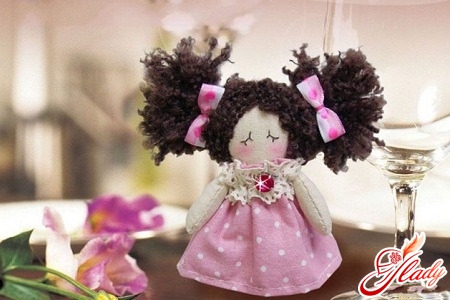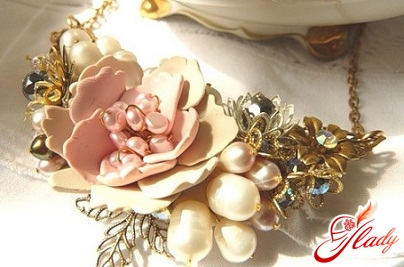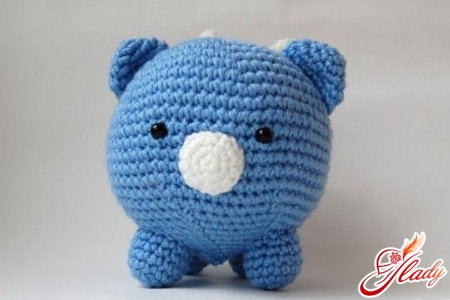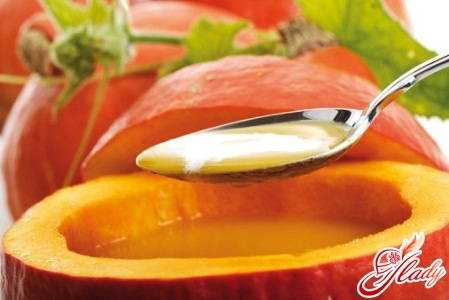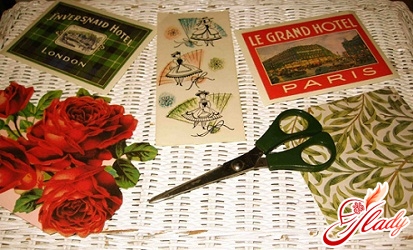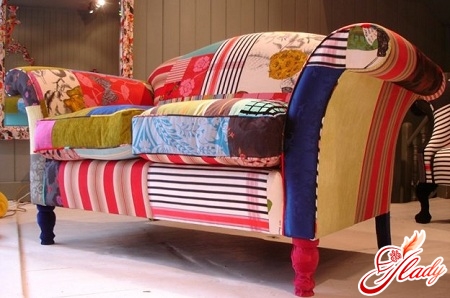 Oh, this beautiful and incomprehensible word “patchwork”.What does it mean? This tricky word is called patchwork. From English, "patchwork" is translated as "work with a rag". Patchwork needlework is characterized by a special technique, in which multi-colored pieces of fabric are sewn into whole canvases, and then various interesting and useful things are made from them (blankets, bedspreads, pillows, towels and even clothes). Patchwork is experiencing a rebirth today, having become incredibly popular. However, patchwork sewing is not a novelty in the world of needlework. It has been known since ancient times and is considered one of the types of folk art.
Oh, this beautiful and incomprehensible word “patchwork”.What does it mean? This tricky word is called patchwork. From English, "patchwork" is translated as "work with a rag". Patchwork needlework is characterized by a special technique, in which multi-colored pieces of fabric are sewn into whole canvases, and then various interesting and useful things are made from them (blankets, bedspreads, pillows, towels and even clothes). Patchwork is experiencing a rebirth today, having become incredibly popular. However, patchwork sewing is not a novelty in the world of needlework. It has been known since ancient times and is considered one of the types of folk art.
From the history of quilting
Initially, this type of handicraft appearedsolely for reasons of economy. Beautiful factory-made fabric (as opposed to homespun fabrics) was considered a luxury. So even the smallest scraps left over from sewing clothes were used. In Russia, patchwork sewing was very popular in villages, where colorful scraps were used to sew elegant blankets and clothes. In Japan, patchwork sewing also had a sacred meaning. For example, a kimono sewn from the same number of silk scraps was considered a symbolic gift for a significant date (66, 77, 88, 99 years). And the birthplace of patchwork needlework was good old England, where after the ban on the sale of Indian chintz, the idea of patchwork sewing was realized. However, the history of this needlework is even more ancient than it may seem. For example, the oldest example of this art is a fragment of an ornament made from pieces of leather. This exhibit is kept in the Egyptian Museum and dates back to 980 BC. Another example of patchwork was discovered in the Cave of a Thousand Buddhas in China. This is a carpet sewn from scraps of pilgrims' clothing, and the age of this creation has already exceeded a thousand years.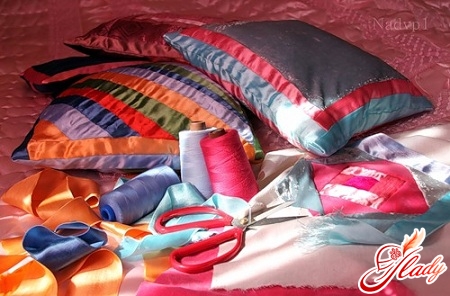
The creative component of patchwork
Patchwork sewing is, of course, a folk art (even(i.e., a national) invention. And patchwork itself is an exclusively Anglo-American invention. This folk art has become a recognized form of decorative and applied art today, and like any other art, patchwork is a creative process. Having first appeared in England, patchwork then successfully moved to the New World together with the first settlers, and it was there that it began to develop and improve. If the first patchwork products were sewn for the purpose of economy, then patchwork gradually began to lose its utilitarian meaning, turning into a real art with its own laws, techniques and artistic features. Patchwork has its own technique, which is based on the principle of mosaic. The patchwork technique is characterized by the principle of composing patterns and ornaments from geometric shapes. The main elements that make up a patchwork canvas are squares, stripes, triangles and regular polygons. And it is difficult to even imagine how many drawings can be made from such figures. However, the names of the patchwork patterns speak for themselves:
- Log house
- Well
- Herringbone
- Arable land
- Chess player
- A pineapple
- Mill
- Star
- Honeycombs
- Flower
- Boat
- Stained-glass window
- Tulip
- A heart
And this is only a tiny part of the already known patterns.for products made using the patchwork technique. Meanwhile, the process does not stand still, and craftswomen come up with more and more new patterns for patchwork sewing. Each patchwork artist has her own artistic flair, her own understanding of beauty and harmony. Nevertheless, there are rules for combining colors for the patchwork technique.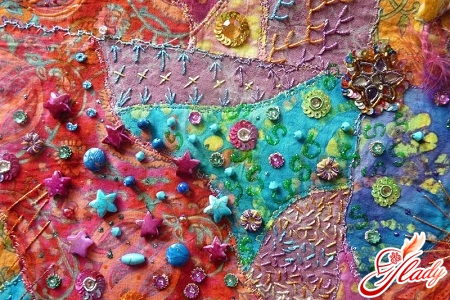
Color in patchwork
Since patchwork is officially recognized as an art,then here "work" their own rules, breaking which, the patchwork master can suffer a complete fiasco and get instead of a patchwork masterpiece, made in the patchwork style, something incomprehensibly colorful and gaudy. If the combination of fabrics by texture and density is not limited by strict frameworks, then for the combination of colors in the art of patchwork such frameworks exist. According to the rules of this technique, in a patchwork product only one color must prevail (dominate). The other colors only complement it. This is what the correct and acceptable combination of colors in the patchwork technique looks like.
- Gray color: green, black, red, pink, blue, yellow, blue;
- Blue: blue, red, light purple, brown, orange, blue;
- Blue: gray, red, burgundy, golden;
- Purple: yellow, golden, turquoise, orange;
- Lilac: green, light purple, gray;
- Brown: gray, beige, golden, blue-green (sea-green);
- Red: golden yellow, blue, gray, green;
- Bordeaux: pink, green, blue;
- Pink: brown, burgundy, gray;
- Orange: purple, blue, white, purple, green, brown;
- Yellow: golden, brown, green.
In fact, the simplicity of the man-madepatchwork art is both obvious and imaginary. On the one hand, it couldn't be simpler: you came up with (or chose) a pattern, cut out some patches, and sewed them together into a single piece. But you've already realized how difficult it is to come up with this pattern, how difficult it is to select patches that match in color, and the work with the patchwork technique itself is quite painstaking and labor-intensive. But nothing will scare true craftswomen! And if you are a creative person, then it's simply a sin to refuse such a wonderful opportunity to realize your creative potential. Patchwork will help you with this. Go for it! We recommend reading:





